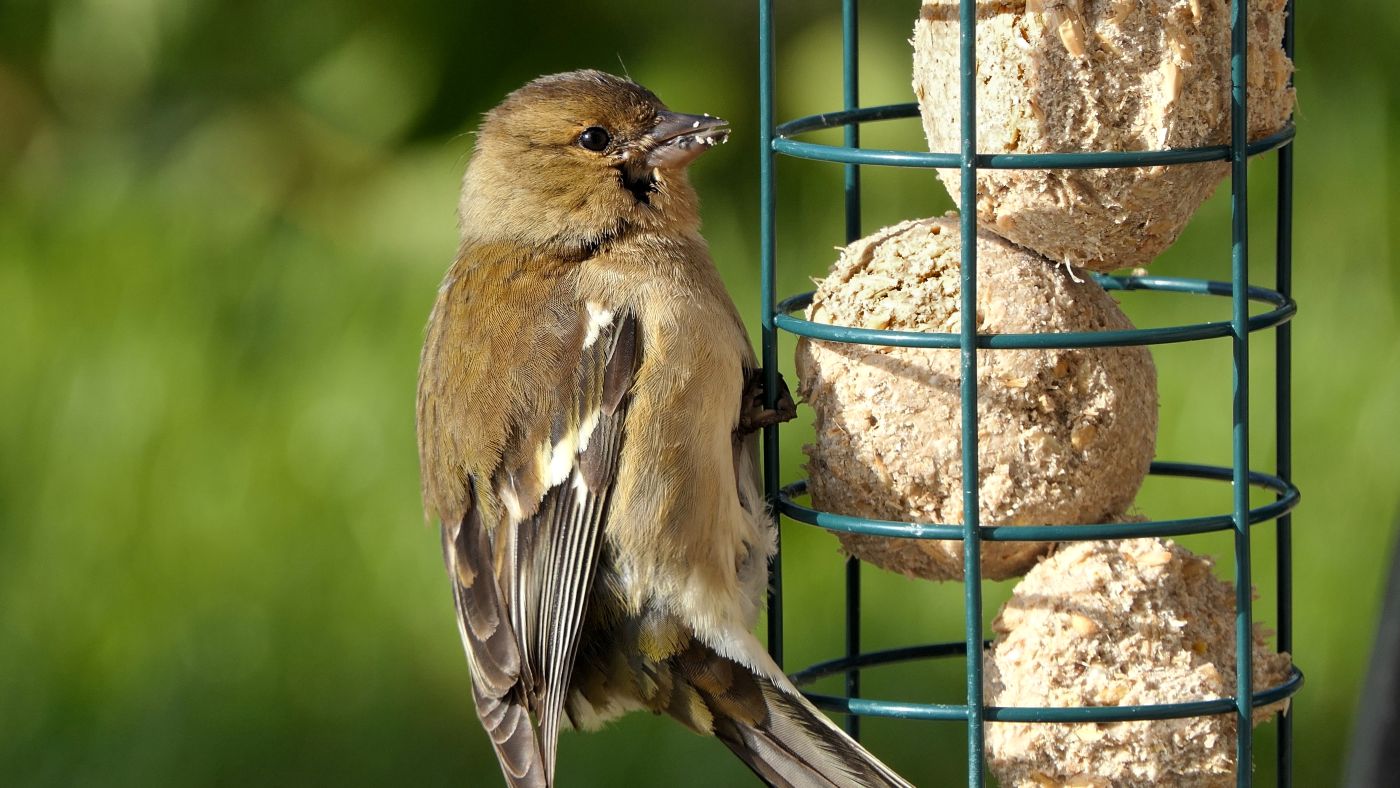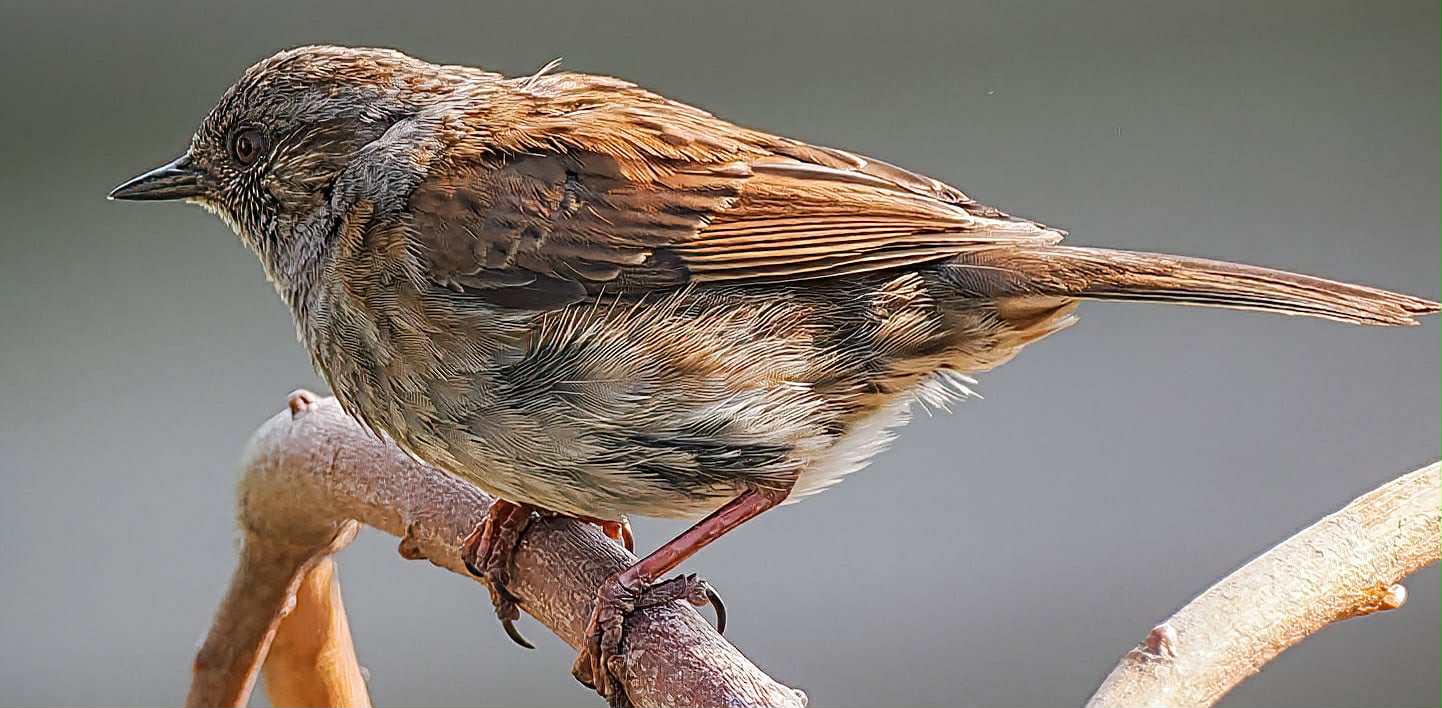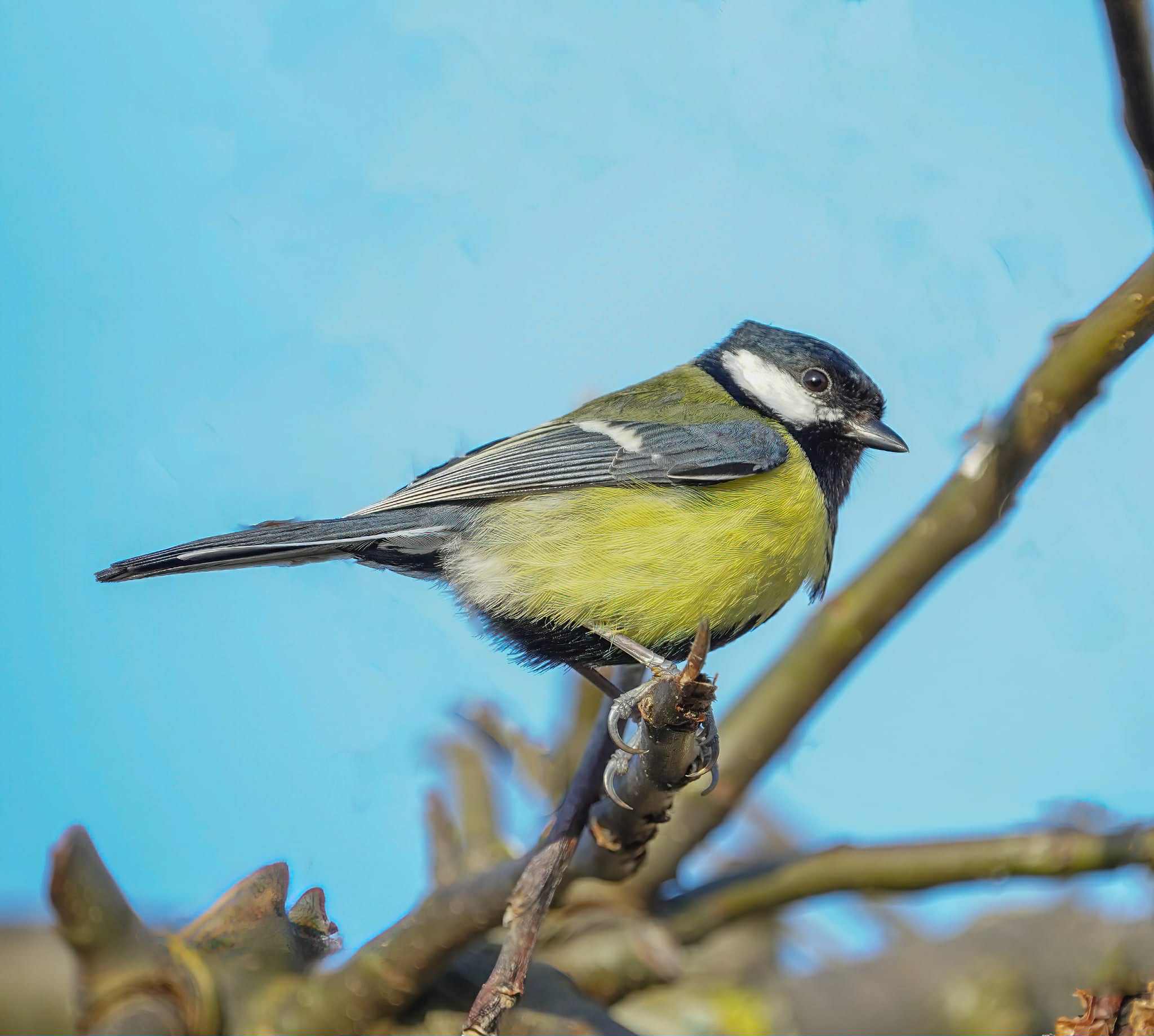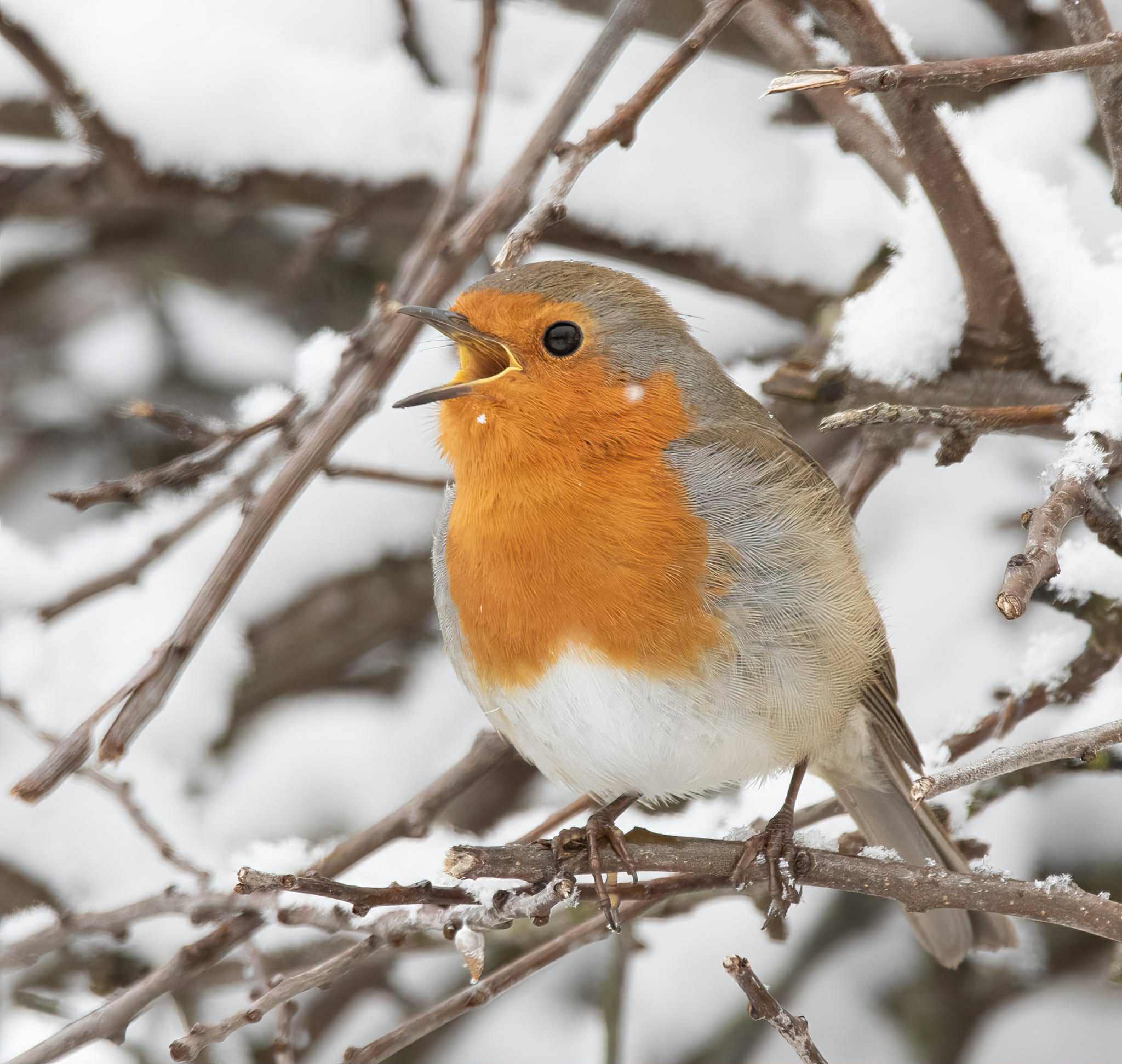Humans have always had a connection to the birds around us throughout the world. Ancient Egyptians dedicated fields to feeding Peregrine Falcons and the African Sacred Ibis, and Hindu writings describe “bhutayajna”, the act of providing food for birds; it is believed this practice would help balance against negative Karma. British naturalist James Fisher wrote of a 6th century monk, Saint Serf of Fife, who managed to tame a robin by offering it food. During a particularly harsh winter in 1890-1891, British national newspapers encouraged people to leave food out for the birds to help them survive. Since then, feeding the birds has become a popular pastime in the UK. In fact, a survey by PFMA in 2020 showed that 41% of people with outdoor space fed wild birds.

But where if you want to start feeding birds as well, where to begin? The best thing to do is get yourself a feeder, specifically a seed feeder as these are the most versatile, especially if you aren’t sure what birds you’re going to attract yet. Ideally, you’ll want the largest feeder you can afford or have room for, this means it is easier for birds to spot as they search for food. It may also be worth thinking about the colour of your feeder. Scientists believe that birds see in the UV spectrum, which allows them to have a more complex understanding of their environment. Unfortunately, it does mean that some colours blend together, so your standard dark green feeders may be difficult to spot for them. If you can, opt for a brighter coloured feeder such as blues and violets. Secondly, pick a seed mix which caters to a large variety of birds, especially if you’re not sure what birds are in your area. You also only want to fill your feeder halfway to start off with. Birds will most likely turn their beaks up at damp seeds, so overfilling your feeder may lead to a lot of wastage, especially if it takes a while for the birds to find your feeder. Lastly, be patient! It may take a little while for birds to find your feeder, just be persistent. You could even try sprinkling the seed around the feeder, this makes it much easier to spot.
Suet is also a good place to start. While it’s traditionally used as a winter food, suet should really be thought of as a year-round food. Birds need high energy foods at various key times of the year as well as the winter such as breeding season, moulting season, and pre-migration. This time of year in particular is a great time to use suet since chicks and fledgelings need more energy to grow strong and healthy. Insect based suet is a great high-energy option. When feeding suet in the warmer months, be aware that it may go soft or spoil, so make sure you check on it regularly. When looking at suet to buy, it may be useful to keep an eye on their ingredients, as in the UK, manufacturers can legally put up to 20% worth of fillers with no nutritional value in suet. Some products have been found to contain sand, chalk and even glue. Sticking with a higher quality suet is a great start to keeping your birds happy, healthy, and returning customers!

The types of birds you may find in your garden often depend on where you live. More urban environments see birds such as house sparrows and starlings, whereas rural environments see more farmland and woodland birds such as the blue tit and chaffinch. However, there are a few birds who are almost guaranteed to be visitors wherever you live in the UK, these include robins, blackbirds, dunnocks and wrens. This time of year is a great time to start attracting robins, thrushes and dunnocks since they face difficulties finding food in the wild. During the transition between spring and summer, they find it particularly difficult to find worms and other invertebrates to snack on; this is especially difficult when they have chicks to feed back in the nest. So, putting insects such as black soldier fly larvae or mealworms out should help attract them to your garden; they will take advantage of any insects they can find!
Unfortunately, once you have attracted birds to your garden, you’re not going to be able to pick and choose who pays you a visit. There isn’t really a way to tell your unwanted visitors to go away, so the best thing to do is compromise with getting food that they enjoy and placing it away from your feeders. For example, magpies love mealworms, so scatter some at the other end of your garden to keep them busy while your favourite birds go to the feeder! This technique also discourages the ‘pecking order’ behaviour where the bigger more confident birds like magpies and pigeons usually get first dibs on bird food by pushing the smaller, shyer birds out of the way. Put simply, keep them distracted! Rodents may also be unwanted guests. Rats and mice are attracted to mess, so spillages could attract them to your garden. Regular sweeping should solve this issue.

However, one of the biggest complaints from UK bird watchers are grey squirrels. For many, their antics are a great source of entertainment, but for some, squirrels are a pain with their bird feeder raiding habits! There are many options on the market, the most popular being squirrel proof feeders. For the most part they are useful, they work by having a cage around the feeder with holes big enough for little birds to get in but too small for squirrels and bigger birds to follow them. However, the problem with these feeders is that sometimes, smaller squirrels can fit through the holes, they then gorge themselves on birdseed so much that they can no longer get out! The issue is, under UK law it is illegal to release grey squirrels once captured since they are not a native species in Britain. If you have accidentally caught one, the legal advice is, unfortunately, to get them humanely destroyed. A good alternative to squirrel proof feeders is using cayenne pepper within the bird seed. Cayenne pepper is a great deterrent as mammals can taste spice, whereas birds cannot. Squirrels don’t like its spicy taste, so will be discouraged to try the seed again, birds cannot taste cayenne pepper, so will be none the wiser; if anything ,it provides added health benefits to them!

So, you’ve attracted birds to your garden, but they haven’t returned. There could be a few reasons for this.
Is your food still fresh?
All seed with dry out eventually, especially if you’re using a mix with niger seed. When the seed dries out, it loses its fat content and birds are much more likely to turn their beaks up at it. Suet should also be thrown out if it becomes mouldy or mushy.
Are your feeders clean?
Birds may also turn their beaks up if your feeder is dirty. Feeders can develop harmful bacteria too if left mucky, so a regular clean is beneficial to keep returning customers and the bird’s health. Every two weeks is ideal.
Is there a lot of natural food?
During warmer months like spring and summer, natural food is much more plentiful, so most birds gravitate towards more natural sources of nutrition such as wild berries.
Is there a new predator in the area?
New cats or sparrow hawks may cause havoc to local wildlife. However, don’t worry, as the birds should soon get to know the predator’s hunting patterns and eventually visit the feeder again when no predators are around.
Unfortunately, changes sometimes happen. As much as we put out seed and make our gardens perfect for birds, things can change, birds move, families break up, establish new territories or pass away. It’s the circle of life!

A technique which is a little unconventional in attracting birds back to your garden is creating some kind of bug hotel. Use wood, leaves, sticks, stones or any other natural materials you can find and build a little habitat for bugs to set up shop in. This should help attract birds as they are likely to take advantage of all the easy to reach bugs. It’s like an all you can eat buffet for birds! Alongside this, the use of a bird bath is a great idea, this provides them with a place to drink and bathe. Having a reliable source of water is essential to a bird’s health and wellbeing, especially during dryer periods.
Lastly, enjoy it! Watching the birds out of your window is fun and you’ll certainly start to grow attached to your regular visitors! Responsible bird feeding is all about establishing a safe, clean and enjoyable experience to any visiting birds. Once you start feeding your birds, keep it up and make sure to stick to your routine, you’re providing a trustworthy and sustainable source of food and water, and your new friends will appreciate you for it.
Written by By Beth Harrison & images: Albie Drillot


Comments